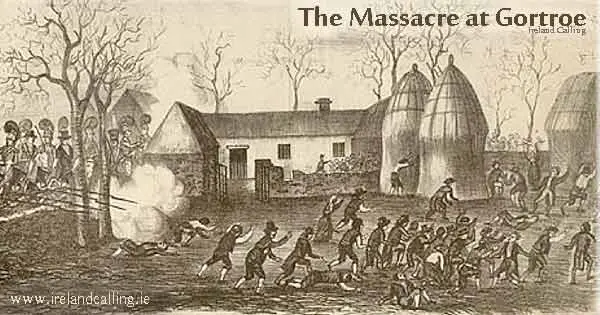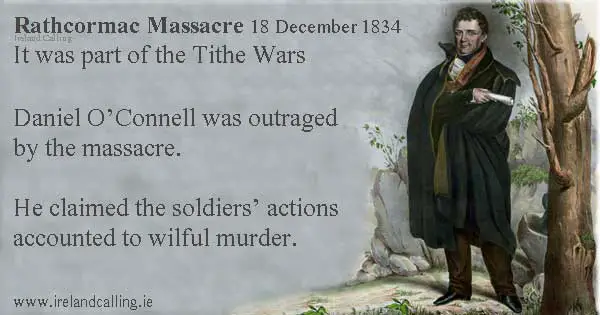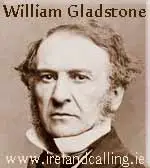The Rathcormac Massacre (also called the Gortroe Massacre) happened at Bartlemy Cross in the civil parish of Gortroe near the village of Rathcormac. It resulted in the deaths of 20 residents of the Cork village.
It was part of the Tithe Wars which took place across Ireland throughout much of the 1830s. Tithes were taxes of 10% of income from tenant farmers and local tradesmen – these taxes were to support the Protestant Church ministers. Irish citizens were obliged to pay tithes (taxes) to the local vicar of the Anglican Church of Ireland. Many Catholics resented this law, and thought of it as an unjust tax, as they were paying towards a church other than their own.
Archdeacon William Ryder, of the parish of Gortroe, set out with his collection party to gather up his tithes in Rathcormac. They were anticipating resistance from the locals, as the tithes were already overdue and many were refusing to pay. With this in mind, Ryder had arranged for his collection party to be given a military escort by more than 100 soldiers.
The residents of Rathcormac were waiting for Ryder and a group of about 250 protesters had formed. They fended of Ryder’s party by throwing stones before being forced to retreat. They took refuge on the land of Widow Ryan, who owed Ryder 40 shillings worth of tithes.
Ryder ordered his troops forward to collect the 40 shillings from Ryan or property of equal value. They were repelled by the locals with spades, sticks and stones. After nearly an hour, the commander of the troops grew inpatient and ordered his soldiers to open fire on the crowd.
Nine people were killed instantly, with a further eleven dying later from their injuries. Several members of both sides suffered severe injuries. The crowd was dispersed and Ryder received the full 40 shillings payment from Widow Ryan.
The Roman Catholic clergy supported the Irish people. The Bishop of Kildare and Leighlin, Dr. James Doyle, wrote this below:

It became the rallying cry for the movement against the tithes.
Daniel O’Connell, the Irish politician who campaigned for Catholic Emancipation, was outraged by the massacre and claimed the soldiers’ actions accounted to wilful murder. The case did go to court and the Spectator magazine at the time reported that:
13 of the jury agreed it was wilful murder, two considered it manslaughter and eight said it had been justifiable homicide.
The charges against the soldiers were later dropped.
There were fourteen catholics and nine protestants on the jury.
The controversy caused by the Rathcormac Massacre did force the hand of the government, which stopped the automatic military escorts for tithe collections.

 The Tithe Commutation Act for Ireland was introduced in 1838. This reduced the amount payable in tithes by a quarter. The remainder was added to the rent and paid to the landlords. The landlords then passed this extra ‘rent’ payment to the authorities. This stopped the violent collections of the Tithe War.
The Tithe Commutation Act for Ireland was introduced in 1838. This reduced the amount payable in tithes by a quarter. The remainder was added to the rent and paid to the landlords. The landlords then passed this extra ‘rent’ payment to the authorities. This stopped the violent collections of the Tithe War.
Full relief from the tax was not achieved until the Irish Church Act 1869, which disestablished the Church of Ireland, and so Irish Roman Catholics no longer paid their tithes to the Anglican Church of Ireland. This was passed by the government led by Prime Minister William Gladstone.
history.html